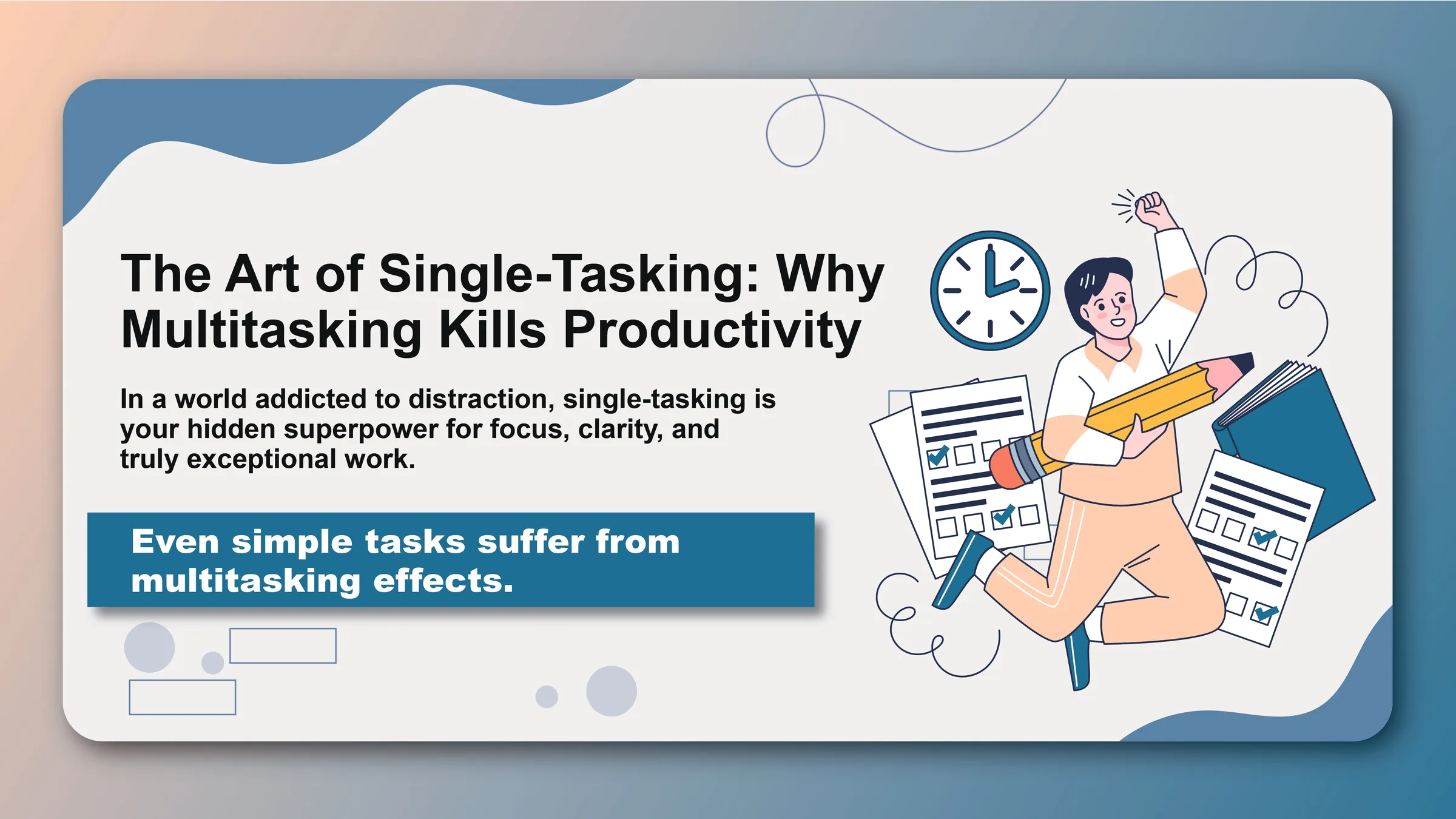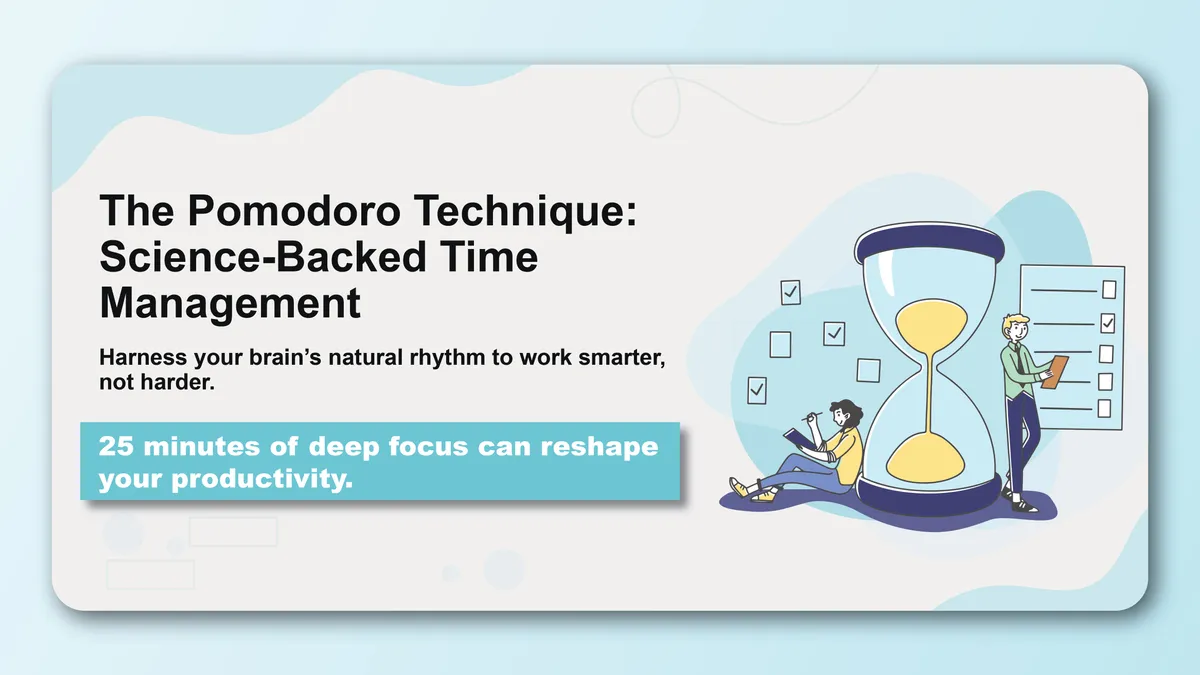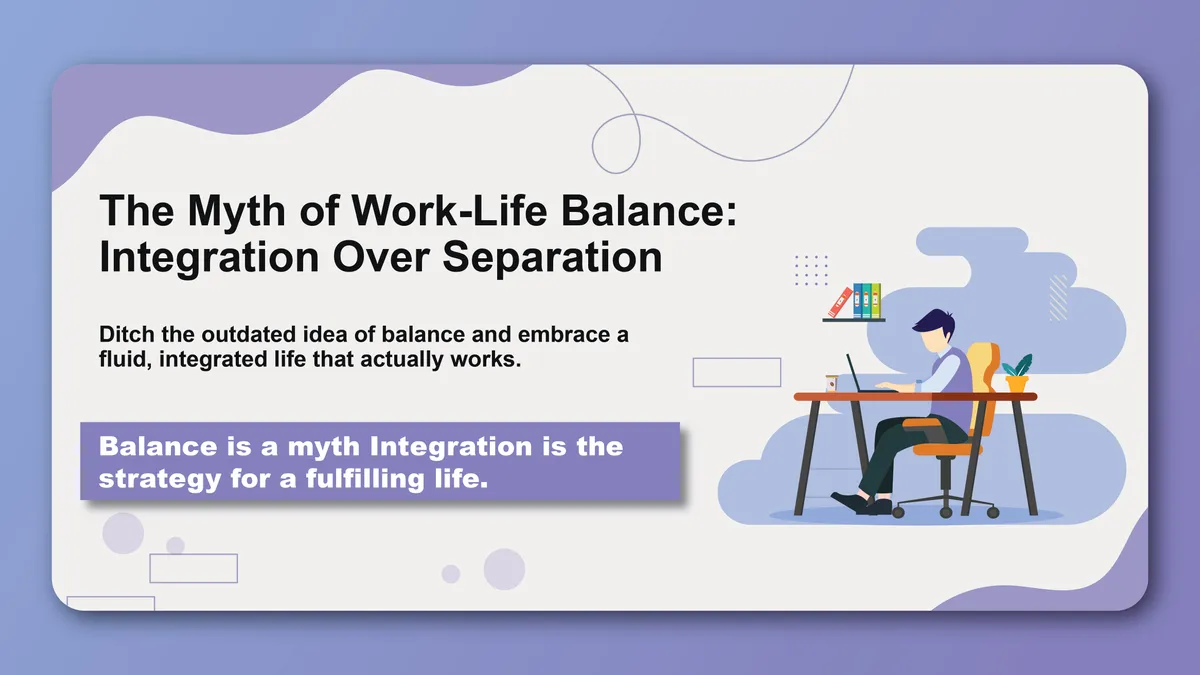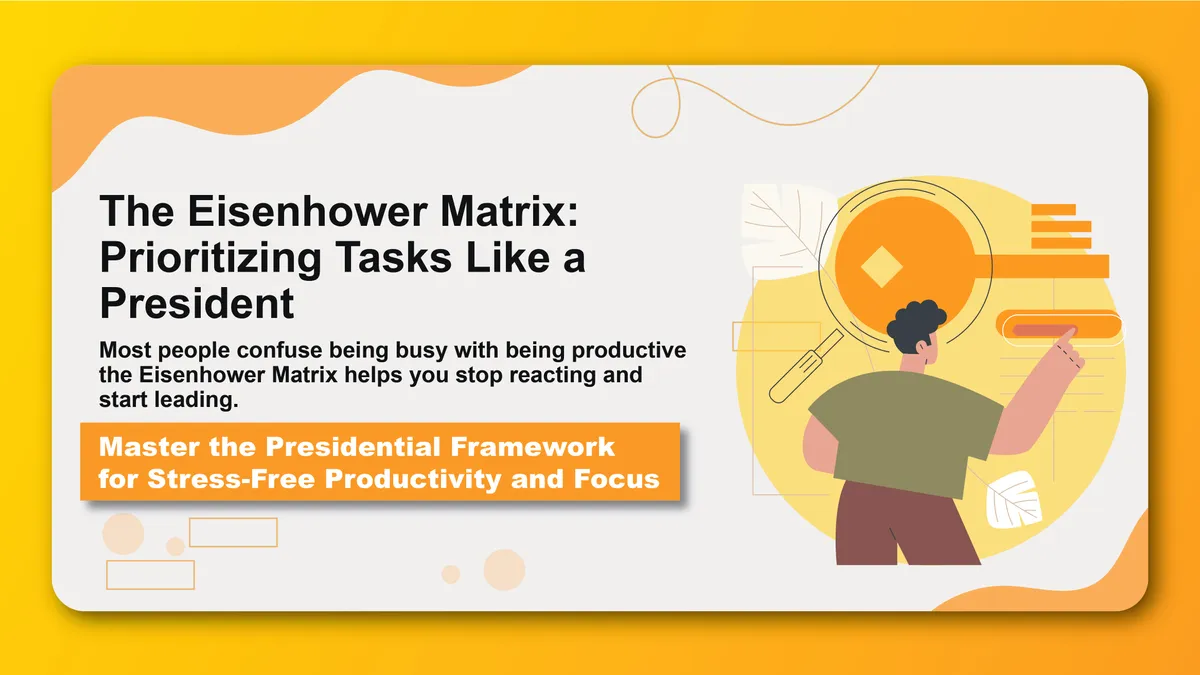In our hyperconnected world, multitasking has become a badge of honor. We pride ourselves on answering emails while on conference calls, scrolling social media while watching TV, and juggling multiple projects simultaneously. But what if this approach to productivity is actually making us less productive, less creative, and more stressed?
The uncomfortable truth is that multitasking is a myth. Our brains cannot actually focus on multiple tasks simultaneously. Instead, we're rapidly switching between tasks, creating an illusion of parallel processing that comes at a significant cost to our performance, well-being, and output quality.
The solution isn't better multitasking—it's learning the lost art of single-tasking.
The Neuroscience of Multitasking
What Actually Happens in Your Brain
Task-Switching, Not Multitasking When we think we're multitasking, our brains are actually performing rapid task-switching. Each time we shift attention from one task to another, our prefrontal cortex must disengage from the first task and reorient to the second. This process, called "task-switching cost," creates delays and reduces efficiency.
The Attention Residue Effect Research by Dr. Sophie Leroy at the University of Washington shows that when we switch from Task A to Task B, part of our attention remains stuck on Task A. This "attention residue" reduces our cognitive capacity for Task B, leading to decreased performance and increased errors.
Cognitive Load and Working Memory Our working memory can only hold 4-7 pieces of information at once. When we multitask, we're constantly loading and unloading information, overwhelming our cognitive resources and reducing our ability to process information effectively.
The Hidden Costs of Multitasking
Reduced Productivity Studies show that multitasking can reduce productivity by up to 40%. Tasks take longer to complete, and the quality of work suffers significantly.
Increased Errors Multitasking increases error rates by up to 50%. When our attention is divided, we miss important details and make more mistakes.
Elevated Stress Levels Constant task-switching triggers the release of stress hormones like cortisol and adrenaline, leading to chronic stress and mental fatigue.
Decreased Creativity Multitasking prevents us from entering the deep focus states necessary for creative thinking and problem-solving.
Impaired Learning Research shows that multitasking while learning reduces comprehension and retention by up to 60%.
The Single-Tasking Advantage
The Science of Focused Attention
Flow State Access Single-tasking allows us to enter flow states—periods of deep focus where we perform at our peak. Flow states are impossible to achieve when attention is divided between multiple tasks.
Enhanced Cognitive Performance When we focus on one task, we can utilize our full cognitive capacity, leading to better problem-solving, decision-making, and creative thinking.
Improved Memory Formation Single-tasking allows for better encoding of information into long-term memory, improving learning and retention.
Reduced Mental Fatigue By eliminating the constant cognitive switching costs, single-tasking reduces mental fatigue and allows us to maintain focus for longer periods.
Quality Over Quantity
Deeper Work Single-tasking enables us to engage more deeply with our work, leading to higher quality outputs and more meaningful results.
Better Decision-Making When we're not juggling multiple tasks, we can devote our full attention to analyzing information and making better decisions.
Enhanced Creativity Deep focus allows our brains to make novel connections and generate creative insights that are impossible when attention is fragmented.
Improved Problem-Solving Complex problems require sustained attention and deep thinking—capabilities that are severely compromised by multitasking.
Common Multitasking Myths
Myth 1: "I'm Good at Multitasking"
The Reality: No one is good at multitasking. Some people are better at task-switching, but this still comes with significant costs.
The Evidence: Studies show that even people who believe they're excellent multitaskers perform worse when multitasking compared to single-tasking.
The Solution: Accept that multitasking is inefficient for everyone and focus on developing single-tasking skills instead.
Myth 2: "Multitasking Saves Time"
The Reality: Multitasking actually takes longer than completing tasks sequentially.
The Evidence: Research indicates that multitasking can increase task completion time by up to 25% due to switching costs.
The Solution: Prioritize tasks and complete them one at a time for faster overall completion.
Myth 3: "Simple Tasks Are Fine for Multitasking"
The Reality: Even simple tasks suffer from multitasking effects.
The Evidence: Studies show that even routine tasks like walking while texting can lead to decreased performance and increased accidents.
The Solution: Give your full attention to each task, regardless of its perceived simplicity.
Myth 4: "Multitasking is Necessary in Modern Work"
The Reality: Multitasking is a choice, not a requirement.
The Evidence: The most productive people and organizations prioritize single-tasking and deep work.
The Solution: Design your work environment and processes to support single-tasking rather than encourage multitasking.
The Single-Tasking Framework
Step 1: Task Identification and Prioritization
Single-Task Selection
- Choose one specific task to focus on
- Clearly define what constitutes completion
- Estimate the time required
- Commit to working only on this task
Priority-Based Sequencing
- Use frameworks like the Eisenhower Matrix to prioritize tasks
- Focus on high-impact activities first
- Sequence tasks based on energy requirements
- Group similar tasks together for efficiency
Step 2: Environment Design
Distraction Elimination
- Close unnecessary browser tabs and applications
- Turn off notifications on all devices
- Create a clutter-free workspace
- Use website blockers during focused work sessions
Focus Signals
- Use headphones or music to signal focus time
- Create visual cues that indicate "do not disturb"
- Set up a dedicated workspace for deep work
- Use lighting and environment to support concentration
Step 3: Attention Management
Mindful Transitions
- Take a moment to center yourself before starting each task
- Consciously shift your attention to the new task
- Use breathing exercises to clear mental residue
- Set clear intentions for each work session
Sustained Focus Techniques
- Use the Pomodoro Technique for time-boxed focus
- Practice meditation to strengthen attention muscle
- Take regular breaks to prevent mental fatigue
- Use accountability systems to maintain focus
Advanced Single-Tasking Strategies
The Deep Work Protocol
Time Blocking for Deep Work
- Schedule specific blocks for important, complex tasks
- Protect these blocks from interruptions
- Batch similar tasks together
- Leave buffer time between different types of work
The Shutdown Ritual
- Create a clear end to your workday
- Review what was accomplished
- Plan tomorrow's priorities
- Mentally disengage from work
The Attention Restoration Method
Nature Breaks
- Take short walks outside between tasks
- Look at natural scenery during breaks
- Practice outdoor meditation
- Use nature sounds for background ambiance
Mindfulness Practices
- Practice brief meditation between tasks
- Use breathing exercises to reset attention
- Practice body awareness and tension release
- Engage in mindful movement or stretching
The Single-Tasking Mindset
Present-Moment Awareness
- Practice being fully present with each task
- Notice when your mind wanders to other tasks
- Gently redirect attention back to the current task
- Cultivate appreciation for the task at hand
Quality Focus
- Emphasize excellence over speed
- Take pride in doing one thing well
- Celebrate depth over breadth
- Value focused work time as sacred
Overcoming Single-Tasking Challenges
Challenge 1: Feeling Unproductive
The Problem: Single-tasking can feel slow compared to the busyness of multitasking The Solution: Measure results, not activity
Strategies:
- Track completed tasks and quality of work
- Measure time to completion for similar tasks
- Document improvements in work quality
- Celebrate deep work accomplishments
Challenge 2: External Interruptions
The Problem: Colleagues, meetings, and urgent requests disrupt single-tasking The Solution: Create boundaries and systems
Strategies:
- Communicate your focus schedule to others
- Set specific times for availability
- Use "office hours" for questions and collaboration
- Create systems for handling urgent requests
Challenge 3: Internal Distractions
The Problem: Your own mind generates distractions and task-switching impulses The Solution: Develop attention training and capture systems
Strategies:
- Keep a "capture" notebook for distracting thoughts
- Practice mindfulness to notice attention wandering
- Use breathing techniques to return to focus
- Build tolerance for single-task engagement
Challenge 4: FOMO (Fear of Missing Out)
The Problem: Worrying about missing important information or opportunities The Solution: Create systems for staying informed without constant monitoring
Strategies:
- Schedule specific times for checking email and messages
- Use summary tools and notifications for truly urgent matters
- Trust that important information will reach you
- Focus on the opportunity cost of divided attention
Building Your Single-Tasking Practice
Week 1: Awareness and Assessment
Multitasking Audit
- Track how often you multitask throughout the day
- Note the types of tasks you typically combine
- Identify your biggest multitasking triggers
- Assess the quality of work produced while multitasking
Single-Tasking Experiments
- Try single-tasking for one hour per day
- Choose simple tasks to start with
- Notice the difference in focus and quality
- Track your energy levels and mental fatigue
Week 2: Environment and System Setup
Distraction Elimination
- Remove unnecessary apps and bookmarks
- Set up website blockers and focus apps
- Create a dedicated workspace for deep work
- Establish notification schedules
Focus Rituals
- Develop a pre-work routine to enter focus mode
- Create signals that indicate single-tasking time
- Practice transitioning mindfully between tasks
- Establish clear boundaries with colleagues
Week 3: Skill Development
Attention Training
- Practice daily meditation or mindfulness
- Use breathing exercises to strengthen focus
- Notice and redirect wandering attention
- Build tolerance for sustained focus
Task Management
- Implement priority-based task sequencing
- Use time-blocking for important work
- Create systems for capturing distracting thoughts
- Develop methods for handling interruptions
Week 4: Integration and Optimization
Habit Formation
- Make single-tasking your default mode
- Build single-tasking into your daily routine
- Create accountability systems
- Celebrate single-tasking victories
Continuous Improvement
- Regularly assess and adjust your approach
- Experiment with different focus techniques
- Optimize your environment for single-tasking
- Share your practice with others for support
The Long-Term Benefits of Single-Tasking
Professional Benefits
Enhanced Performance
- Higher quality work output
- Faster task completion times
- Improved problem-solving abilities
- Better decision-making skills
Career Advancement
- Reputation for producing excellent work
- Increased reliability and consistency
- Enhanced creativity and innovation
- Better leadership and focus skills
Personal Benefits
Reduced Stress
- Lower cortisol levels and stress hormones
- Improved mental clarity and peace
- Better work-life balance
- Increased sense of control and accomplishment
Improved Well-being
- Better sleep quality
- Enhanced creativity and joy
- Stronger relationships through present-moment attention
- Greater life satisfaction and fulfillment
Cognitive Benefits
Strengthened Attention
- Improved ability to focus for extended periods
- Better selective attention and filtering
- Enhanced cognitive flexibility
- Stronger working memory
Enhanced Learning
- Better retention and comprehension
- Improved skill acquisition
- Deeper understanding of complex topics
- Enhanced problem-solving capabilities
Creating a Single-Tasking Culture
Personal Leadership
Model Single-Tasking Behavior
- Demonstrate focused attention in meetings
- Avoid multitasking during conversations
- Show the value of deep work
- Share your single-tasking successes
Educate Others
- Share the science behind single-tasking
- Discuss the costs of multitasking
- Teach single-tasking techniques
- Create awareness about attention management
Team and Organizational Changes
Meeting Culture
- Implement "devices down" policies
- Create agenda-focused discussions
- Limit meeting length and frequency
- Encourage active listening and presence
Work Environment
- Design spaces that support focused work
- Reduce unnecessary interruptions
- Create quiet zones for deep work
- Establish communication protocols
Your Single-Tasking Action Plan
Immediate Actions (Today)
- Choose one task and commit to single-tasking for 30 minutes
- Turn off all notifications during this focused session
- Notice the difference in your work quality and mental state
- Record your observations and insights
Short-term Goals (This Week)
- Implement one single-tasking session per day
- Create a distraction-free workspace
- Practice mindful transitions between tasks
- Track your productivity and stress levels
Long-term Vision (Next Month)
- Make single-tasking your default work mode
- Build single-tasking habits into your daily routine
- Create systems for managing interruptions
- Develop advanced focus and attention skills
The art of single-tasking isn't just about productivity—it's about reclaiming your ability to think deeply, create meaningfully, and engage fully with your work and life. In a world that constantly demands our divided attention, the ability to focus on one thing at a time becomes a superpower.
Start small, be patient with yourself, and trust that the practice of single-tasking will not only improve your productivity but also enhance your overall quality of life. Your future self will thank you for the gift of sustained attention and deep focus.
Ready to master the art of single-tasking and transform your productivity? Build focused work habits and track your deep work sessions with Habityzer and discover how single-tasking can revolutionize your performance.



